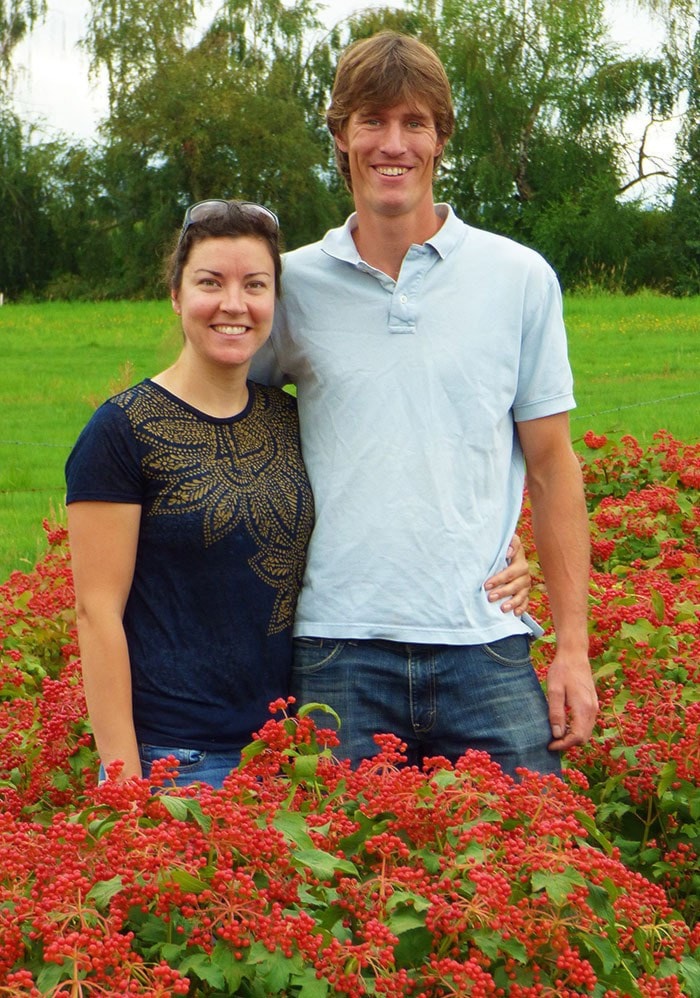Would it surprise you to know that most of our Valentine’s roses are grown thousands of miles away in South America?
Similarly, those bound for European markets are usually of African origin, cut fresh in countries like Kenya and flown to flower auctions, such as the one in Aalsmeer, Holland, where they are purchased and sent to local florists.
Cut flowers have become a truly international business – with breeding, propagation and the finished product being grown in such diverse locales as Israel, Costa Rica and Australia.
Despite the economic benefits of producing these plants in warmer climes, where artificial heating is not required, there is an environmental cost to shipping these across the globe via jet airliners, which are not known for their fuel efficiency.
So it was a pleasant surprise when I stumbled upon (while doing a residential garden design) a Pitt Meadows-based wholesale cut flower nursery, named after its first crop, a brilliant Dutch Iris called ‘Blue Magic’.
For over 30 years, Blue Magic Greenhouses Ltd. has been growing quality cut flowers for the local market.
Started in 1982 by Leo Captein, the nursery has grown to 12 acres in size and makes extensive use of rolling greenhouses (think glass houses set on rails) to trap heat naturally in order to extend the growing season and be able to use green manures on the exposed fallow plots.
This sort of crop rotation keeps pests and diseases to a minimum and it works better with the natural temperature cycles.
Captein began his cut flower business with some of the standards, including freesia, carnations and alstroemerias (Peruvian Lily).
Captein’s son Dave currently runs the nursery and was kind enough to give me a tour of the facilities, which included both field and greenhouse crops.
Together with his wife Stephanie, we walked through mass plantings of winterberry (Ilex verticillata), the bare stems and bright red drupes of which will adorn many of our homes this upcoming Christmas.
There were also fields of compact cranberry bushes, or Guelder roses (both viburnums), grown for their pure white flowers and translucent red berry clusters.
Massive rows of oriental lilies were equally impressive.
But like any commercially grown crop, Dave Captein is constantly on the lookout for viral diseases.
Perhaps the most spectacular flower displays were the many greenhouses filled from wall to wall with pink, white, blue and purple mophead hydrangeas (hydrangea macrophylla) in full bloom.
These are even highly desirable to the floral markets when they fade to green, as they are the perfect foil for brightly coloured flowers such as gerberas.
Another interesting crop was Dianthus barbatus ‘green trick’, a non-flowering form of sweet William that produces fluffy green pompoms that also look great in mixed bouquets.
Captein pointed out the difficulty in learning to grow a new crop, which both he and his dad agree takes about 10 years to perfect (think ideal pH, tailored fertilizer programs, watering needs, pest issues). Case in point was a white hydrangea called ‘snowball,’ which suffers burnt edges on the floret margins when given too much water on an overcast days (due to a slowing of transpiration).
It is definitely a live-and-learn business that requires your constant attention given the many variables of weather, pests and plant varieties.
That said, this successful nursery grows its diverse crops year-round, with most of their cuts being sold to the British Columbia market, although they can occasionally be found as far flung as Calgary, Winnipeg and Oregon – all of which had their roots right here in Pitt Meadows.
– Mike Lascelle is a local nursery manager and gardening author (hebe_acer@hotmail.com).
